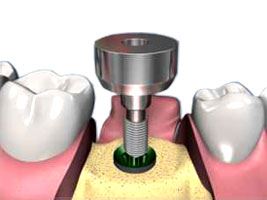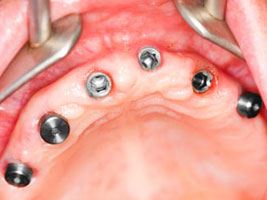No products
To be determined
Shipping
0,00€
Total
Product successfully added to your shopping cart
Quantity
Total
There are 0 items in your cart.
There is 1 item in your cart.
Total products
Total shipping
To be determined
Total
Second surgical stage of dental implantation
The task of the second surgical stage is the disclosure of the implant healing abutment and installation which will:
• promote gums healing;
• Provide easy access to the implant after healing.

Second surgical stage is exactly required when using a two-stage technique. It consists of disclosure of implant head and installing healing abutment or more permanent abutment. It connects with the head of the implant through the oral mucosa. When the implant is relatively more surfactant's it may be detected by a palpation and probing and then using uncover local surgical incision or punch. When the implant is deeper it is necessary to fold the flap with its edges that must be within the keratinized gingiva. At this stage the form of a flap is very important because it gives the surgeon the possibility to simulate soft tissue. Since this procedure is relatively simple it is almost always performed under local anesthesia. As a rule the incision is carried directly over the head of the implant if the surgeon does not plan to move keratinized tissues. If it is possible to avoid relaxing operation if necessary, should be cut at a distance from the edge of the abutment. After flap tilted unscrewed the screw - cap. Sometimes it is necessary to remove excess bone using a special cutter or boron and chisel, it is important to avoid the implant damaging. Then the healing abutment is removed from the sterile packaging and mounted on the implant. Length of the healing abutment is chosen in such a way that it is only slightly peeking out of the soft tissue and does not require very strong corrections temporary prosthesis. There are two types of former's:

Shaper of traditional cylindrical form
Usually they have different diameters depending on the size of the implant and varying lengths depending on the thickness of the soft tissue. A disadvantage of this type of gum shaper is that it does not meet the outline of the restored tooth, the healing abutment could also be too wide, leading to a breach of the contour of soft tissues. Recommended bit narrower gingiva former, because after the final prosthesis fixation tissue surrounding the implant will be slightly stretched.
Individual healing abutment
Individual conditioners gums consisting of two parts, can repeat the outlines of the root of the tooth to be restored. This is advantageous in forming circuit interdental papillae and the surrounding soft tissues. The flap is then laid into place and sutured. Rotate the flap can be used when attempting reconstruction of lost papilla. This technique can improve the amount of tissue between the teeth - especially between the implant and natural teeth. If at the time of registration to use the ratio of the jaws it is possible to carry out the fixation of temporary crowns.


